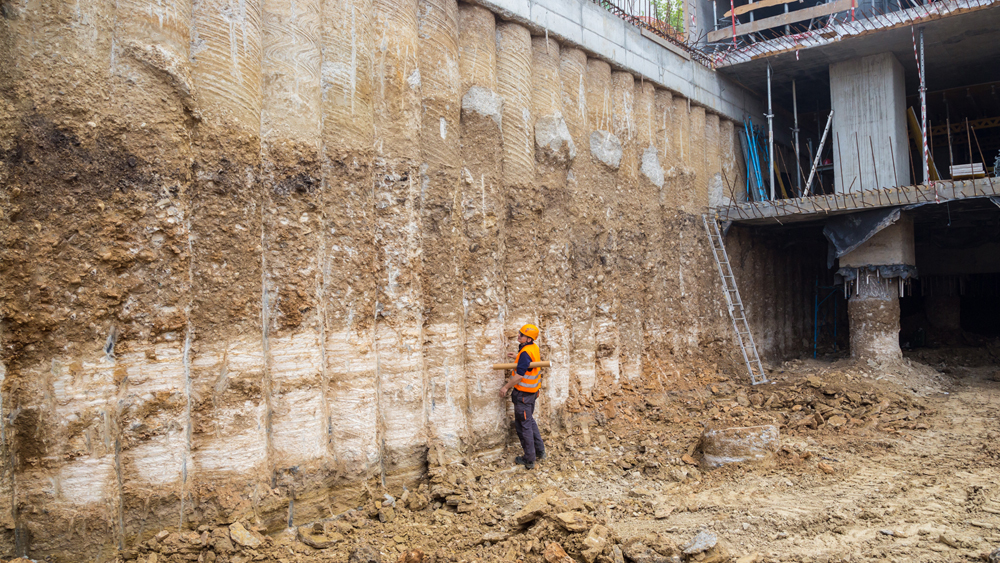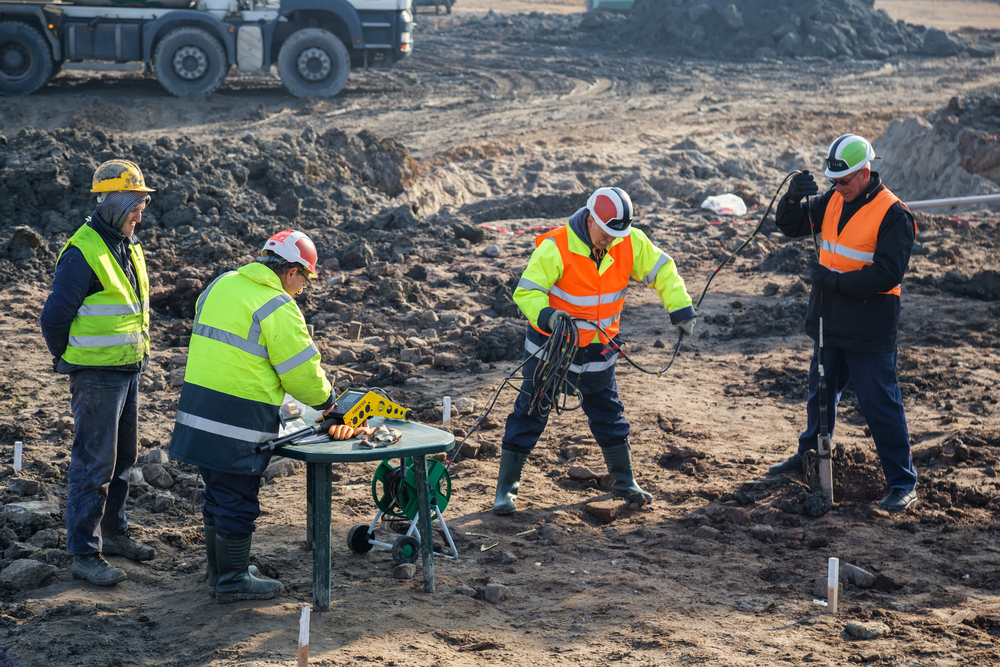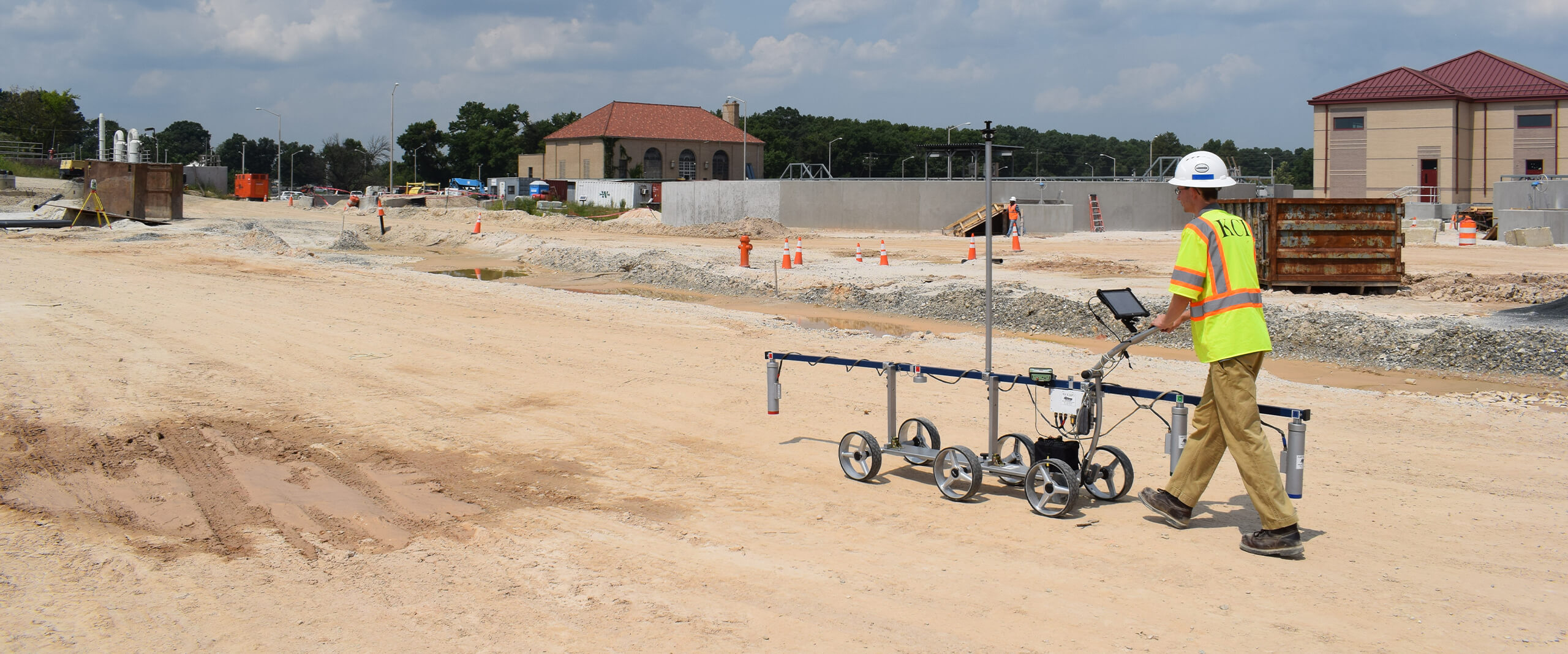Browsing the Complexities of Geotechnical Eng Projects
Browsing the Complexities of Geotechnical Eng Projects
Blog Article
The Crucial Contributions of Geotechnical Designers in Analyzing Dirt Behavior and Foundation Style for Sustainable Framework Growth
Geotechnical engineers offer as a foundation in the realm of sustainable framework advancement, where their proficiency in assessing dirt behavior straight affects the security and longevity of frameworks. By employing sophisticated methods such as Conventional Penetration Examinations and Cone Penetration Testing, they diligently assess soil homes, leading to informed choices on foundation style.
Role of Geotechnical Designers

Along with site examinations, geotechnical designers assess potential threats such as dirt liquefaction, incline stability, and groundwater issues. They use sophisticated engineering concepts to establish services that mitigate these dangers, making sure that designs follow pertinent codes and requirements. Their work often entails partnership with other design self-controls, architects, and ecological scientists to create integrated techniques to facilities advancement.
Furthermore, geotechnical engineers add to sustainable techniques by promoting making use of products and methods that decrease environmental influence. With their comprehensive understanding of dirt mechanics and geology, they play a vital role in fostering safe, resilient, and lasting facilities that fulfills the requirements of culture while securing the setting.
Soil Actions Evaluation Methods
Understanding soil habits is basic to informed decision-making in geotechnical design, as it straight affects the design and building and construction processes. Different analysis techniques are used to examine dirt properties, making sure exact forecasts of its efficiency under various loading conditions.
One main approach is the Standard Penetration Test (SPT), which supplies understandings right into dirt thickness and consistency through the resistance experienced during infiltration. Likewise, Cone Infiltration Screening (CPT) supplies a continuous profile of soil stratification and in-situ stamina parameters, making it possible for a more comprehensive understanding of subsurface conditions.
Laboratory tests, such as Atterberg restrictions, unconfined compressive strength, and triaxial examinations, are crucial for characterizing dirt actions under regulated conditions. These tests facilitate the resolution of important criteria, including shear toughness, leaks in the structure, and compressibility.

Foundation Design Principles
Foundation design concepts are crucial for guaranteeing the stability and longevity of structures, as they determine just how lots are transferred from the superstructure to the underlying dirt. These concepts include different considerations, including load-bearing capacity, negotiation, and side security. A comprehensive understanding of soil mechanics is essential for geotechnical designers to review the communication in between the soil and the structure.
One trick concept is the suitable selection of structure kind, which may consist of shallow foundations, such as spread footings, or deep structures, like piles or caissons, depending upon dirt conditions and structural loads - geotechnical eng. The structure needs to be designed to reduce differential settlement, which can bring about structural damage

Lasting Facilities Practices
Just how can we properly incorporate sustainability into facilities methods? To accomplish this, it is important to adopt a holistic approach that emphasizes the relationship between geotechnical engineering and environmental stewardship. Lasting framework methods begin with detailed site assessments, which evaluate dirt actions, regional environments, and resource availability. By understanding these factors, designers can create layouts that reduce environmental influence while enhancing material usage.
In addition, utilizing innovative construction methods, such as making use of recycled materials and low-impact structures, considerably reduces the carbon impact of infrastructure tasks. Geotechnical engineers play a pivotal function in choosing ideal materials that boost longevity and sustainability, home such as utilizing geo-synthetics to boost soil stability and reduce disintegration.
In enhancement, lasting framework techniques require continuous tracking and upkeep to make sure that frameworks continue to be resistant over time. Inevitably, these techniques not just add to the longevity of structures however additionally advertise a much healthier atmosphere, lining up facilities development with wider sustainability goals.
Study and Applications
Case studies in geotechnical engineering provide valuable understandings right into the practical applications of soil behavior and lasting framework practices. One notable instance is the building of the Burj Khalifa in Dubai, where extensive dirt screening and evaluation were carried out to evaluate the unique difficulties posed by the area's loosened sand and high water table. Geotechnical designers employed progressed strategies such as vibrant probing and cone infiltration screening to identify the soil's load-bearing ability, eventually resulting in the design of a deep structure system that sustains this renowned structure.
An additional important situation is the removal of the San Francisco-Oakland Bay Bridge after the 1989 Loma Prieta quake. Geotechnical assessments disclosed the requirement for dirt stablizing techniques, consisting of grouting and soil nailing, to boost the seismic durability of the foundation. These treatments not only enhanced the bridge's safety but likewise added to its durability and sustainability.
Such case researches exhibit exactly how geotechnical designers play an essential duty in comprehending soil habits and using ingenious remedies to guarantee the structural honesty and sustainability of facilities projects. geotech engineer. Their proficiency is crucial in attending to the complex challenges postured by various soil conditions across varied geographic places
Verdict
To conclude, the payments of geotechnical engineers are crucial for the evaluation of dirt behavior and the layout of foundations, which are vital for lasting infrastructure advancement. Via the application of sophisticated testing techniques and innovative products, these professionals guarantee the security and safety and security of structures while lessening ecological influences. The combination of lasting techniques promotes strength in infrastructure jobs, highlighting the significance of cooperation among stakeholders to attain efficient building and construction services that satisfy both environmental and social requirements.
Geotechnical designers serve as a keystone in the world of sustainable infrastructure advancement, where their proficiency in evaluating dirt behavior directly affects the security and durability of frameworks.Geotechnical designers play visit the website an important function in the style and construction of facilities by analyzing soil and rock habits to make read review certain security and safety. A complete understanding of dirt mechanics is essential for geotechnical engineers to review the communication in between the structure and the dirt.
Geotechnical analyses disclosed the demand for dirt stablizing techniques, including grouting and dirt nailing, to improve the seismic resilience of the structure.In verdict, the payments of geotechnical engineers are vital for the analysis of dirt behavior and the layout of foundations, which are important for sustainable infrastructure growth.
Report this page